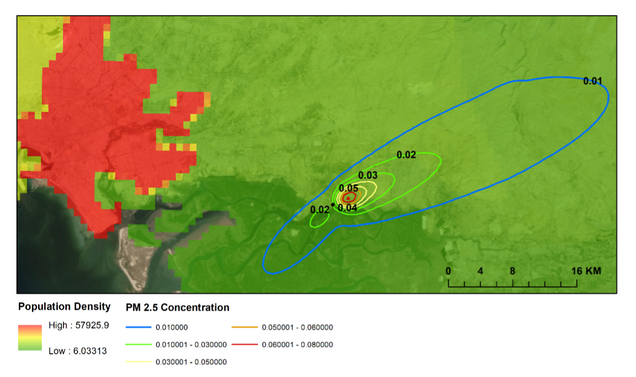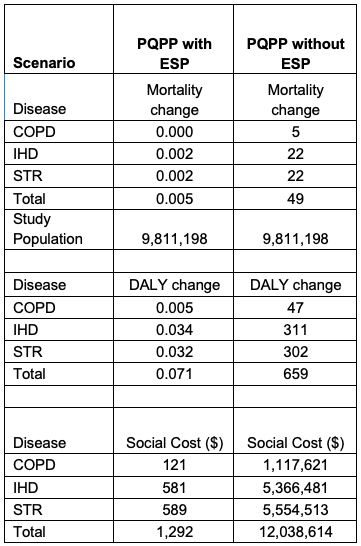Estimating Health Risks from Coal-Fired Power Plants: Pakistan’s Port Qasim Power Plant

As world leaders, researchers and advocates gather in Glasgow, Scotland for the 26th UN Climate Change Conference of the Parties (COP26), much attention will be focused on the global phase-out of coal-fired power. While the additional climate impacts of coal fired power plants (CFPPs) on the global atmosphere are well documented, the extent of pollution on local populations has been harder to pin down.
As many newly added CFPPs in the world have received Chinese finance or investment under the Belt and Road Initiative (BRI) in recent years, investors, regulatory institutions and civil society need to understand the local impacts of CFPPs. In addition, following Xi Jinping’s recent announcement that China would not build new CFPPs overseas, it is important to understand the local pollution impacts of the plants that China has already supported, some of which will operate for decades to come.
Recent reviews have found that BRI host countries often have more lax regulation enforcement, and less Environmental Impact Assessment (EIA) transparency than China. This often results in worse environmental and social impacts than promised, with regulatory information about CFPPs not publicly accessible and impacts on air quality and human health relying upon proprietary data that are impossible to thoroughly evaluate, due to the opaqueness of available data.
A new journal article published in Environmental Impact Assessment Review analyzes a CFPP in Pakistan and establishes a methodology for measuring local impacts to the communities dependent on CFPPs. Using open-source data, the methodology enables researchers to begin answering questions such as: how can social impacts be mitigated by environmental regulations, or rather, what are the dangers of lax host country regulation enforcement? Citing the Port Qasim Power Plant near Karachi, Pakistan as a case study, the article demonstrates the dangers of CFPPs close to populated areas.
Fine particulate matter (PM2.5) is emitted from CFPPs during the process of burning coal and is a leading cause of death worldwide. Electrostatic precipitator (ESP) technology can drastically reduce the amount of PM2.5 emitted by up to 99.5 percent, but ensuring usage and enforcement of ESPs is difficult. Pakistan, and many other BRI countries, have tightened or created more stringent air quality standards that match international norms at 15 micrograms per cubic meter. However, there remains a disconnect with these new regulations and observed air quality. The measured concentration in Karachi ranges from 20-90 micrograms, depending on the month and season, well exceeding this standard.
PM2.5 exposure has well-documented links to diseases like Ischemic Heart Disease (IHD), Stroke (STR) and Chronic Obstructive Pulmonary Disease (COPD). In Southeast Asia, the increased construction of CFPPs is linked to a projected 70,000 additional deaths by 2030.
Air quality issues arising from CFPPs are not unique to the BRI, and the scope of this study is the modeled additional PM2.5 impact of a singular power plant in a dense industrial district. When taken as a whole though, the findings of this study provide important insights for the power generation sector. Additionally, examining the Port Qasim Power Plant in Karachi shows the potential of an open-source near-global methodology that combines plume dispersion and health risk modeling to estimate the social costs of exposure to PM 2.5.
Figure 1 shows the modeled additional PM2.5 concentrations in micrograms per cubic meter that Port Qasim Power Plant contributes to the local atmosphere with no ESP technology, projected above population densities for the greater Karachi region.
Weather patterns direct the majority of the plume away from the city center, shown in red. However, this plume still exposes over 400,000 people in the region to additional pollutants.
Figure 1: Modeled PM2.5 Concentration Plume (in micrograms) from Port Qasim Power Plant, No ESP scenario

Figure 2 shows a similar story, however there is one major difference – PM2.5 concentration levels. In this scenario, ESP technology is being used and maintained properly. There is a drastic reduction in PM2.5, to effectively negligible increases from the perspective of health risk modeling:
Figure 2: Modeled PM2.5 Concentration Plume (in micrograms), ESP Scenario

In the affected subpopulation, where people are exposed to at least one additional microgram per cubic meter of PM2.5, an additional 49 deaths per year can be attributed to this exposure. In Table 1 below, disability-adjusted life years lost are based on average life expectancy by age, and here represent modeled years of life lost across the population. This results in a staggering social cost, as shown below.
Table 1: Results: Additional Mortality Risks and Social Costs from Port Qasim Power Plant, Pakistan

This demonstrates two critical findings: Firstly, CFPPs built with modern technologies and functioning pollution control (ESP) impose little additional social costs from PM2.5 to the immediate surrounding community. Secondly, an open-source approach is feasible, comparable in quality to proprietary analysis and can be applied to CFPPs near-globally.Source: Population data from the Gridded Population of the World (GPW v4), DALY values from WHO Global Health Observatory.
Lax enforcement of environmental regulations and technology can cause additional harm to the communities CFPPs are located in, but if monitored and enforced closely, the additional benefits that access to energy provides cannot be overlooked. This is an important lesson for responsible investors and regulatory institutions and is particularly relevant for participants of CFPPs under the BRI.
To assess risk levels, interested parties, like local governmental organizations and civil society can require and oversee environmental impact assessments, which should include provisions for air pollution control technologies. Follow-up will also be needed to ensure that control technologies are being operated.
Although China will not build new CFPPs in the future, the existing fleet that have received Chinese support raise concerns about local communities exposed to air pollution from these CFPPs. This research shows that using pollution control technology can dramatically reduce the social costs of air pollution-related health impacts from these plants. The modeling approach is fully open source and can enable better impact assessments for future power plant development around the world.
Read the Journal Article